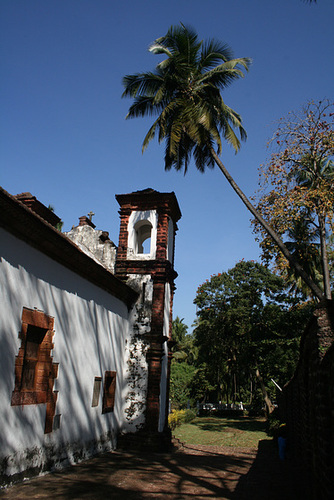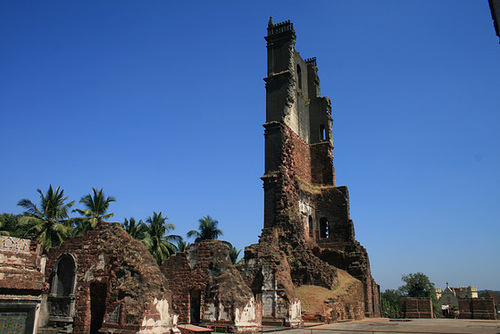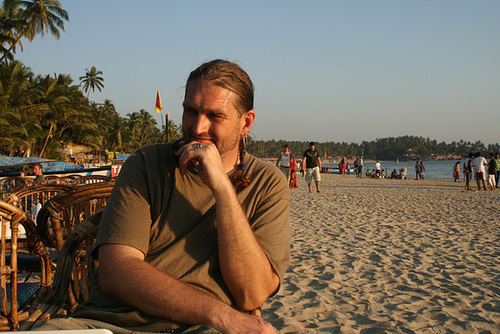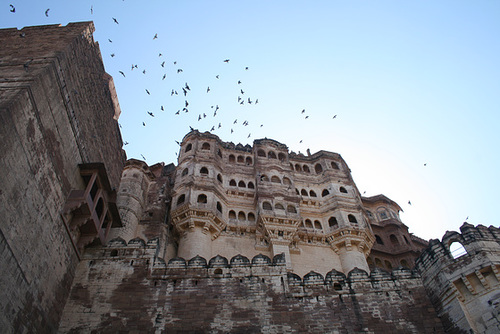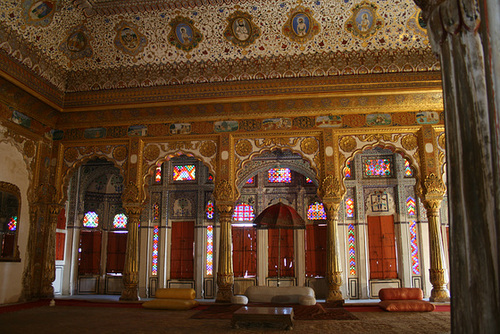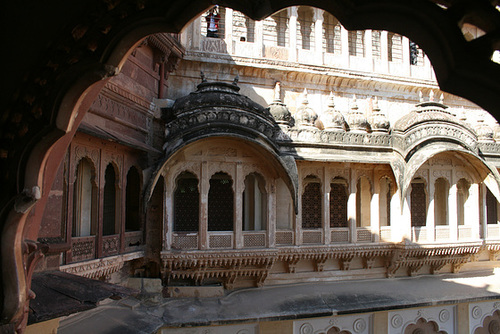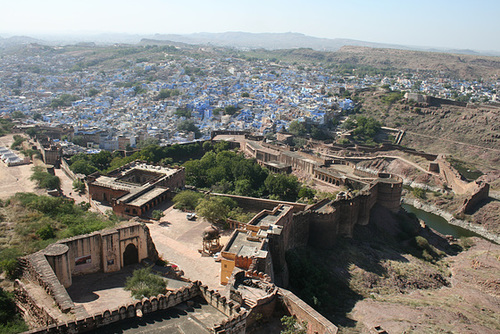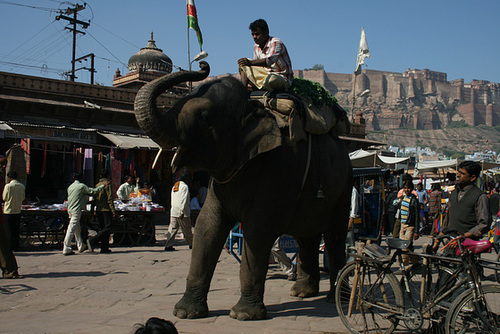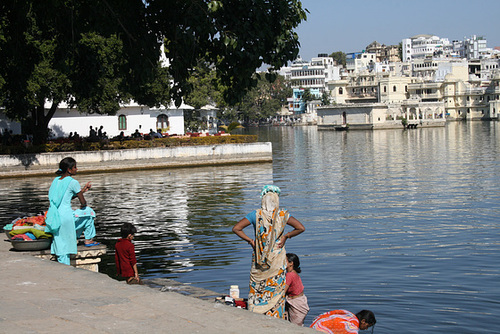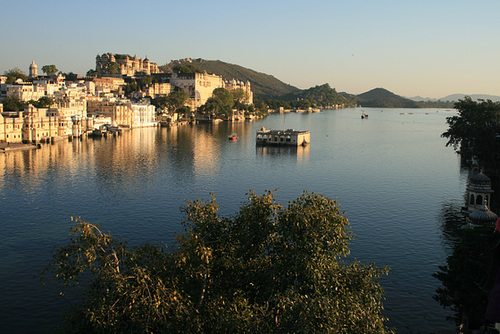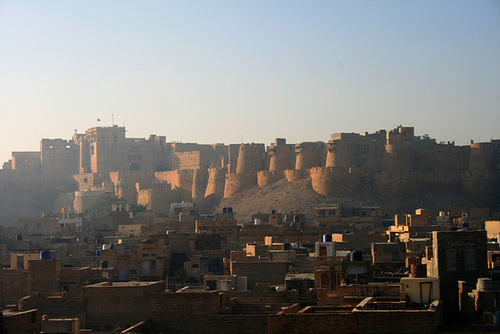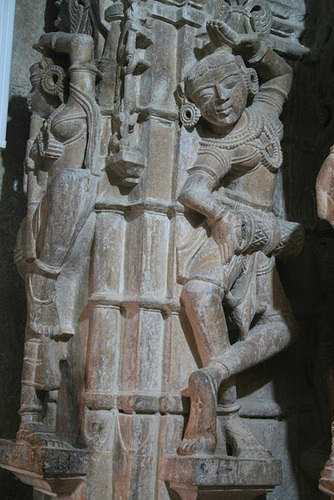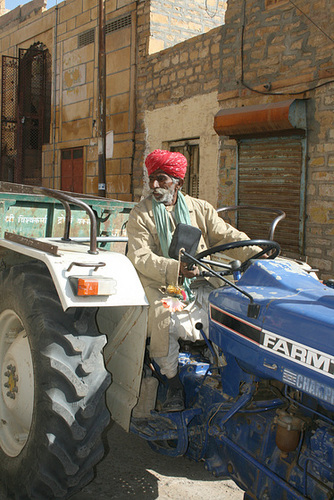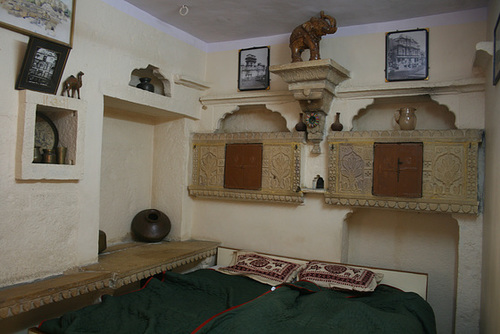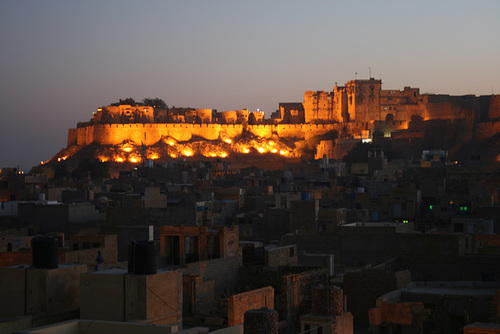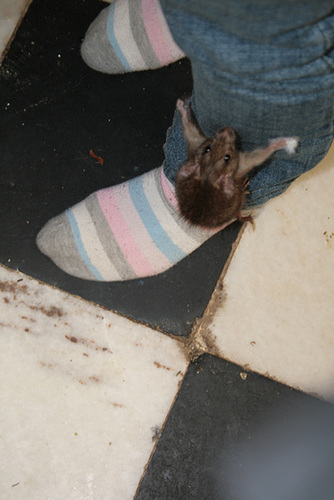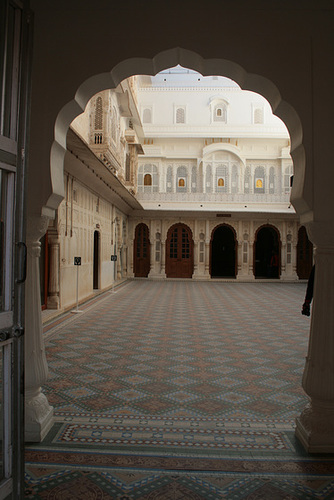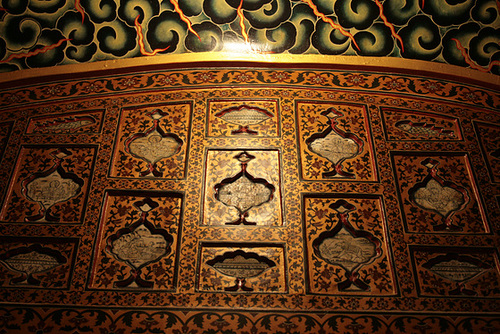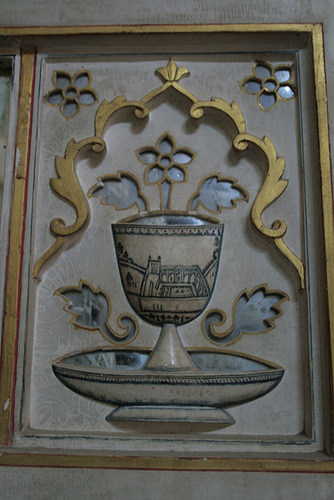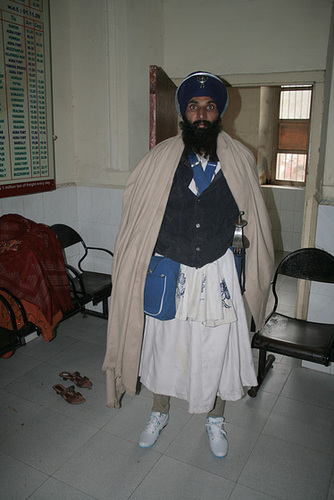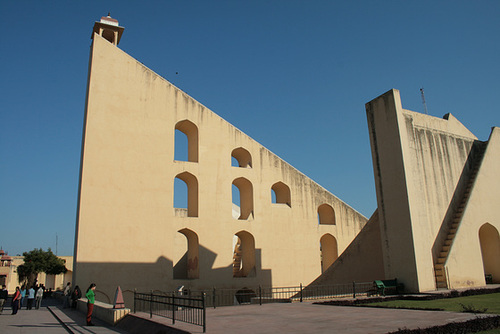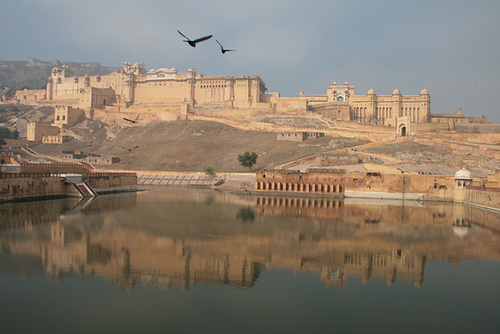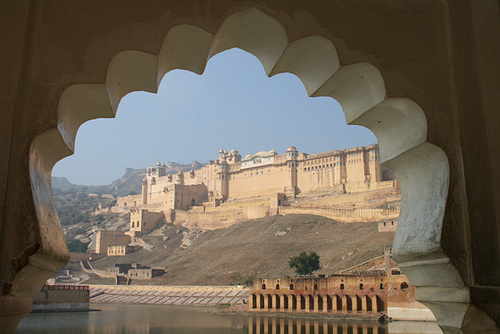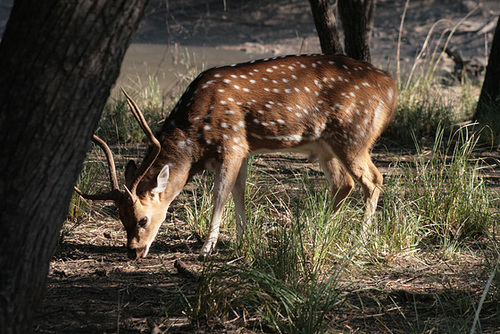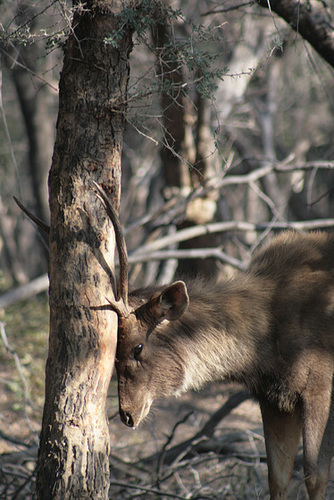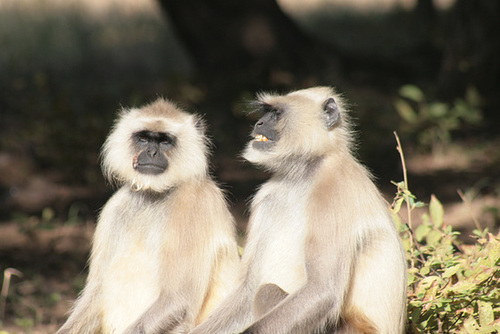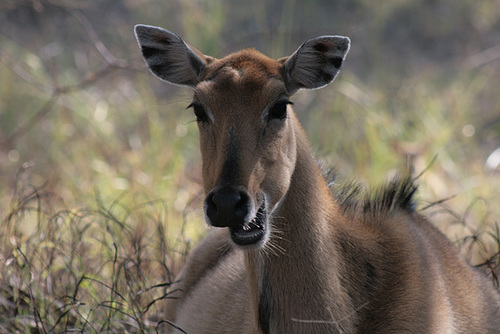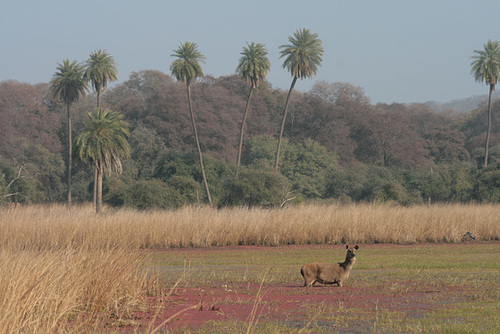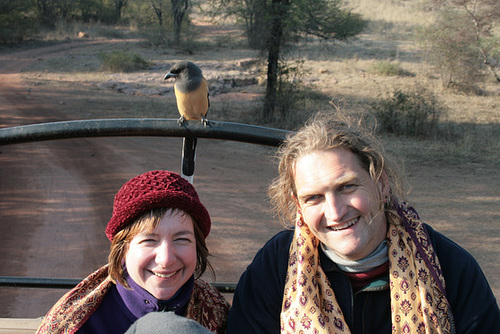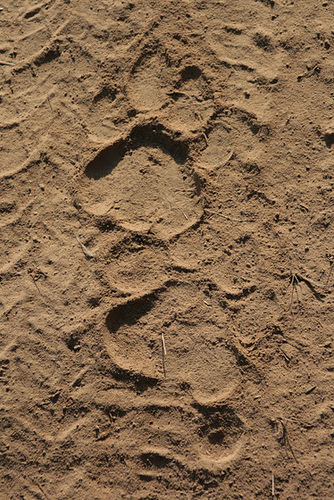19 to 21 January, 2011 – Mumbai, India
First, a couple of photos that should have been in the last blog entry, but missed because I wrote it early ;)
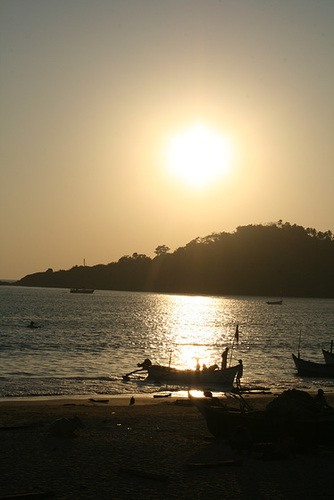
Just Before Sunset
During beer o'clock, from our hut verandah, Palolem Beach.
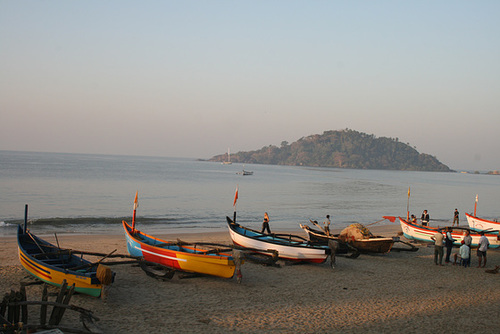
Just After Sunrise
During breakfast, from our hut verandah, Palolem Beach.
Two nights in Mumbai before our flight. One full day, for which we had left a trip to Elephanta Island for. The island is 9 kilometres from Mumbai by frequent ferry. It was nice to have a focus for the last day. The island has a number of caves, which were turned in to temples many centuries ago with some impressive carvings. This, along with plenty of opportunities to spend money on souveniers, watch monkeys play, watch monkeys steal, eating, drinking, and suddenly our day was full. In the evening, we went out for a bit of a nicer dinner, and our final Indian curries, with our couch-surfing host Helene.

Thirsty Monkey
The monkeys on Elephanta Island steal food and drink from anybody who doesn't hold on to it well enough. They then sit close by and taunt the victim by consuming their ill-gotten goods with much gusto and little respect.

Cave Temple, Elephanta Island
Some of the centuries old carvings in the cave temples on Elephanta Island, not far from Mumbai.
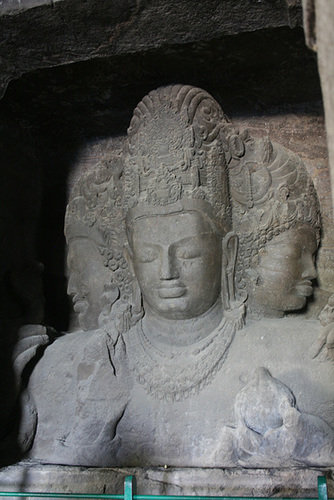
Shiva Bust, Elephanta Island
A large and impressive bust, perhaps a thousand years old, in the cave temples on Elephanta Island, not far from Mumbai.

Sea Eagle
A sea eagle hovers on a draft, scanning for food. Elephanta Island, Mumbai.

Helene
Our Mumbai couch-surfing host, the beautiful Helene of France. No, she and Jo did not deliberately choose to wear red on red cushions...
First, a couple of photos that should have been in the last blog entry, but missed because I wrote it early ;)

Just Before Sunset
During beer o'clock, from our hut verandah, Palolem Beach.

Just After Sunrise
During breakfast, from our hut verandah, Palolem Beach.
Two nights in Mumbai before our flight. One full day, for which we had left a trip to Elephanta Island for. The island is 9 kilometres from Mumbai by frequent ferry. It was nice to have a focus for the last day. The island has a number of caves, which were turned in to temples many centuries ago with some impressive carvings. This, along with plenty of opportunities to spend money on souveniers, watch monkeys play, watch monkeys steal, eating, drinking, and suddenly our day was full. In the evening, we went out for a bit of a nicer dinner, and our final Indian curries, with our couch-surfing host Helene.

Thirsty Monkey
The monkeys on Elephanta Island steal food and drink from anybody who doesn't hold on to it well enough. They then sit close by and taunt the victim by consuming their ill-gotten goods with much gusto and little respect.

Cave Temple, Elephanta Island
Some of the centuries old carvings in the cave temples on Elephanta Island, not far from Mumbai.

Shiva Bust, Elephanta Island
A large and impressive bust, perhaps a thousand years old, in the cave temples on Elephanta Island, not far from Mumbai.

Sea Eagle
A sea eagle hovers on a draft, scanning for food. Elephanta Island, Mumbai.

Helene
Our Mumbai couch-surfing host, the beautiful Helene of France. No, she and Jo did not deliberately choose to wear red on red cushions...
